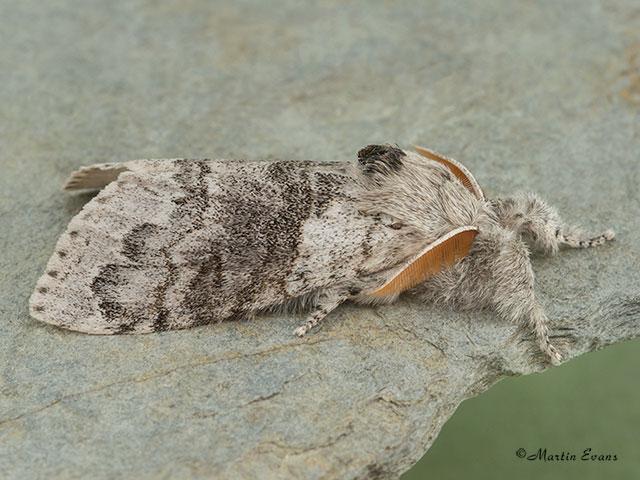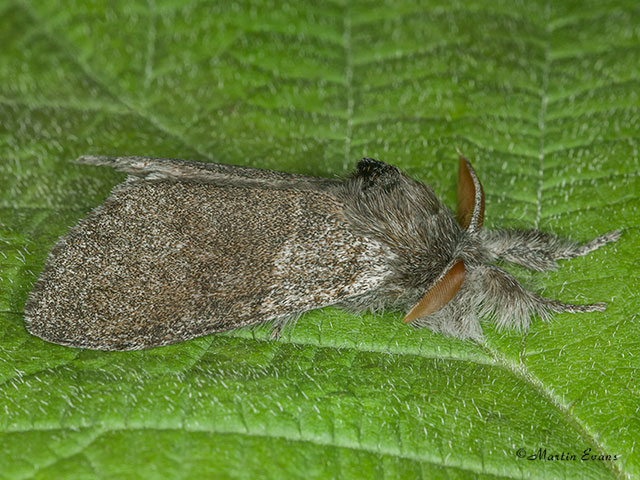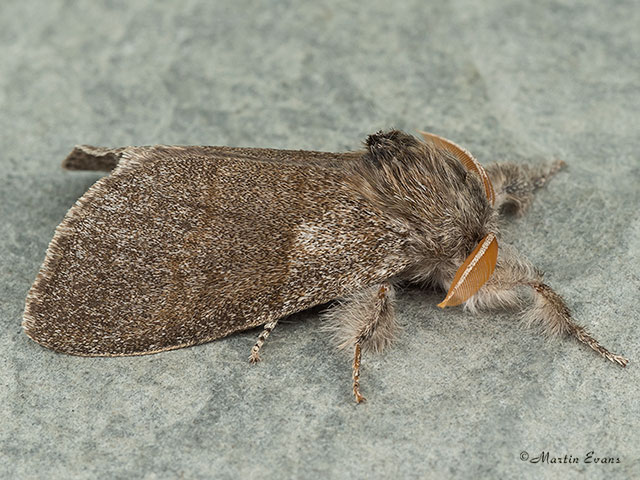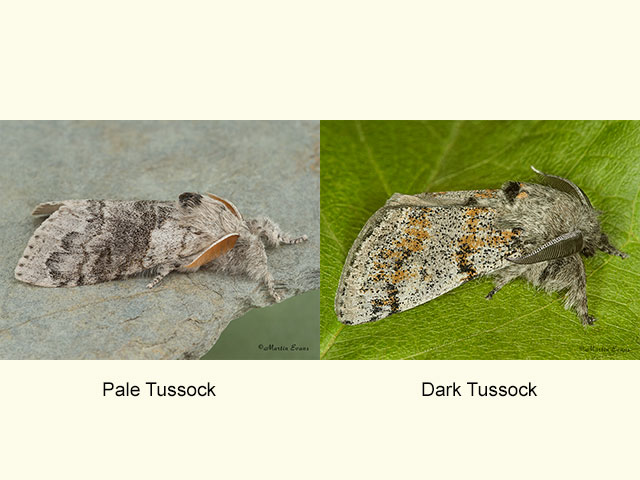Erebidae
72.015 Pale Tussock Calliteara pudibunda (Linnaeus, 1758)
Common
Similar species: Dark Tussock Dicallomera fascelina often has the two outer central cross-lines with orange scales along them. The cross-lines are less often filled in between to form a band that is darker than the rest of the wing. It has grey antennae. In the north they are often much darker than the one in the picture despite that one being from the Scottish Highlands.
Forewing: 21 to 22mm
Habitats: Deciduous woodland, scrub, hedgerows, orchards and gardens.
Habits: The moth comes to light.
Foodplant: The larva feeds on oaks, Downy Birch, Silver Birch, limes, elms, Hawthorn, Blackthorn, Crab Apple, cultivated Apple, Hazel, Barberry, Hop and many other trees. The larvae were abundant in Hop fields before insecticides were introduced and were known as Hop Dogs. It pupates in a silk cocoon on the foodplant or in the leaf litter.
On the European mainland it has also been recorded feeding on Beech, Hornbeam and oaks.






